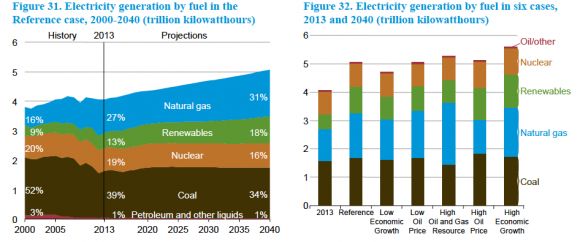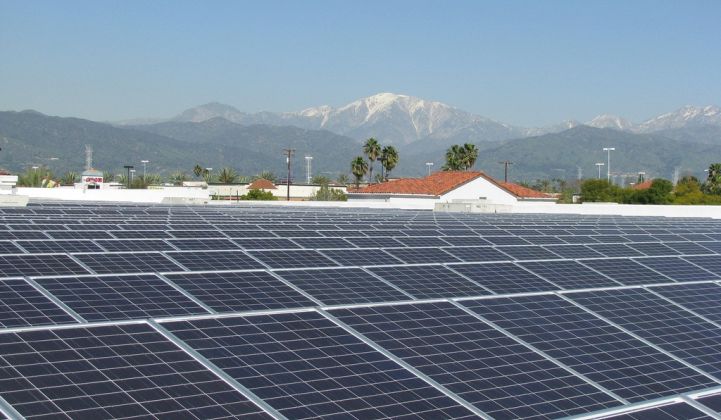The U.S. Energy Information Administration released its 2015 Annual Energy Outlook (PDF) on Tuesday, and as usual, its predictions about the role that renewable energy will play were underwhelming. The report projects that all non-hydro renewables will account for only 18 percent of the country’s electricity generation supply by 2040, up from 13 percent in 2013.
But anyone disappointed with this projection should know two things. First, the EIA’s annual forecasts of energy trends through 2040 have long been criticized for failing to account for the real-world price declines and growth rates for wind and solar power, and thus lowballing their potential for providing more than a fraction of the country’s electricity needs.
Second, the outlook released on Tuesday lacks any analysis of the single most important policy proposal that could have profound effects on the grid’s future balance between fossil fuels and renewable energy -- the Obama administration’s Clean Power Plan.
“This Energy Outlook does NOT -- N, O, T -- include the Clean Power Plan,” Adam Sieminski, EIA’s Administrator, said in a Tuesday presentation in Washington, D.C. That plan, proposed in June 2014, would set out new Environmental Protection Agency regulations aimed at cutting U.S. carbon dioxide emissions to 30 percent below 2005 levels by 2030.
“We will have a separate report out in May” that does include the impacts of that plan, Sieminski said. But “because it’s complicated, we wanted to get the reference case out first.”
These two issues are actually interconnected, according to Jeff Deyette, senior energy analyst with the Union of Concerned Scientists. While it’s understandable that EIA wouldn’t include a draft version of the Clean Power Plan in its projections, its continuing inaccuracies in measuring the cost-effectiveness of wind and solar power could end up negatively affecting how much weight that plan can place on renewables to replace coal-fired power plants, he said.
“Under the Clean Air Act, EPA has to come up with the best system for emissions reductions for power plants. They have cost-achievable thresholds they have to abide by when setting target reductions for states,” he said. “When they’re using EIA’s assumptions, they’re underestimating the cost-effective reduction potential of renewable energy -- and you have targets for the states that are lower than they could be.”
Deyette laid out the main reasons why EIA’s outlook undermines the real-world case for cost-effective solar and wind power. First, it doesn't keep up with industry data on the rapidly falling costs of these technologies, as tracked by GTM Research and industry groups like AWEA and SEIA, he said. As pointed out in UCS' Monday blog post, rooftop solar costs have been cut in half between 2009 and 2013, and wind power costs have dropped by almost three-fifths between 2009 and 2014, but EIA's models don't capture these facts.
Second, it underestimates the continuing improvements in performance of these technologies, in terms of increasing capacity factors, or the amount of “nameplate” capacity that solar and wind farms can actually produce over their effective lifespan, he said. That’s important, because “the amount of output you get out of that investment affects its overall costs,” said Deyette.
Third, the outlook applies “cost multipliers” that presume that future renewable power installations will cost a lot more than those that have already been built. That’s meant to reflect the fact that the country’s most windy and sunny regions, or the lowest-cost greenfields and rooftops, yield cheaper lifetime energy than more challenging areas that may be targeted in future years. But in UCS’ view, the EIA takes it too far, to the point where it predicts that wind power’s growth will essentially flatline for 10 years or more in the next decade, said Deyette.
Finally, and as we’ve pointed out in previous articles, EIA’s solar data does not include solar power projects smaller than 1 megawatt in size -- and that completely misses the massive growth in rooftop solar. EIA is “not trying to hide anything” in this regard, Deyette said. “But we’re seeing such rapid growth in rooftop solar -- it’s providing real tangible services to the grid, reliable power in great numbers now -- that it’s past time for EIA to build that into their projections.”




